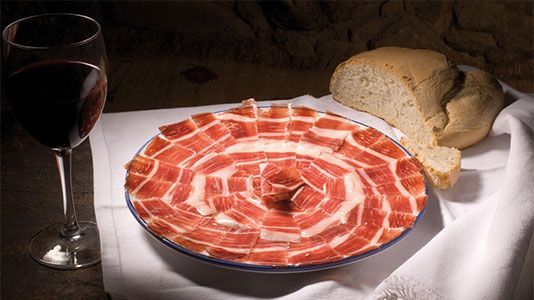Iberian pig in grazing lands
TOURS / ECOTOURS
Paladéente las musas con jamón y vino añejo de Rute.
Miguel de Cervantes

Iberian pig in grazing lands
The most succulent example of sustainability
Did you know that an Iberian pig eats 10 kilos of acorns a day and it’s the only animal in the world, apart from the monkey, that peels them before eating them? Or that Iberian pig fat consists of HDL cholesterol (sometimes referred to as “good” cholesterol), which is essential for a healthy diet? Are you familiar with the montanera, the period when pigs roam free in the dehesa grazing lands? Did you know that Iberico ham is classed as a gastronomic delicacy? To find out more, sign up for this most succulent of tours.
Only a narrow strip of Western Spain is suitable for rearing Iberian pigs: this is known as the DEHESA, an ecosystem involving cereals, centuries-old holm oaks and livestock – bulls, sheep and pigs. It is a wonderful example of how mankind is capable of shaping the wild landscape, harnessing nature in a way that is sustainable and practical without damaging the environment. Cordoba’s dehesas in the Sierra Morena region, known to the Arabs as Fhas al-Ballut (valley of acorns), were officially designated as a Biosphere Reserve by UNESCO in 2002 and an area of 420,000 hectares nowadays comprises one of the largest protected habitats on Earth.
Like all living landscapes, the dehesa has its own rhythms and seasons and boasts attractive features all year round. A delightful sight in spring is to see mothers with their offspring and the annual sheep-shearing. But the most special time of all is undoubtedly autumn and winter, when the grass is at its greenest, when edible fungi abound and there are acorns to feed the pigs during their montanera – the period when they criss-cross the countryside feeding on acorns and roots, resulting in the exquisite taste of Iberian cured ham. At any time of year however it is possible to see the skill that goes into making authentic Iberico ham and sausages emerging from the expert hands of authentic artisans, while an expert in the art of slicing shows us the technique of achieving the wafer-thin slices without which ham would simply not taste the same.
